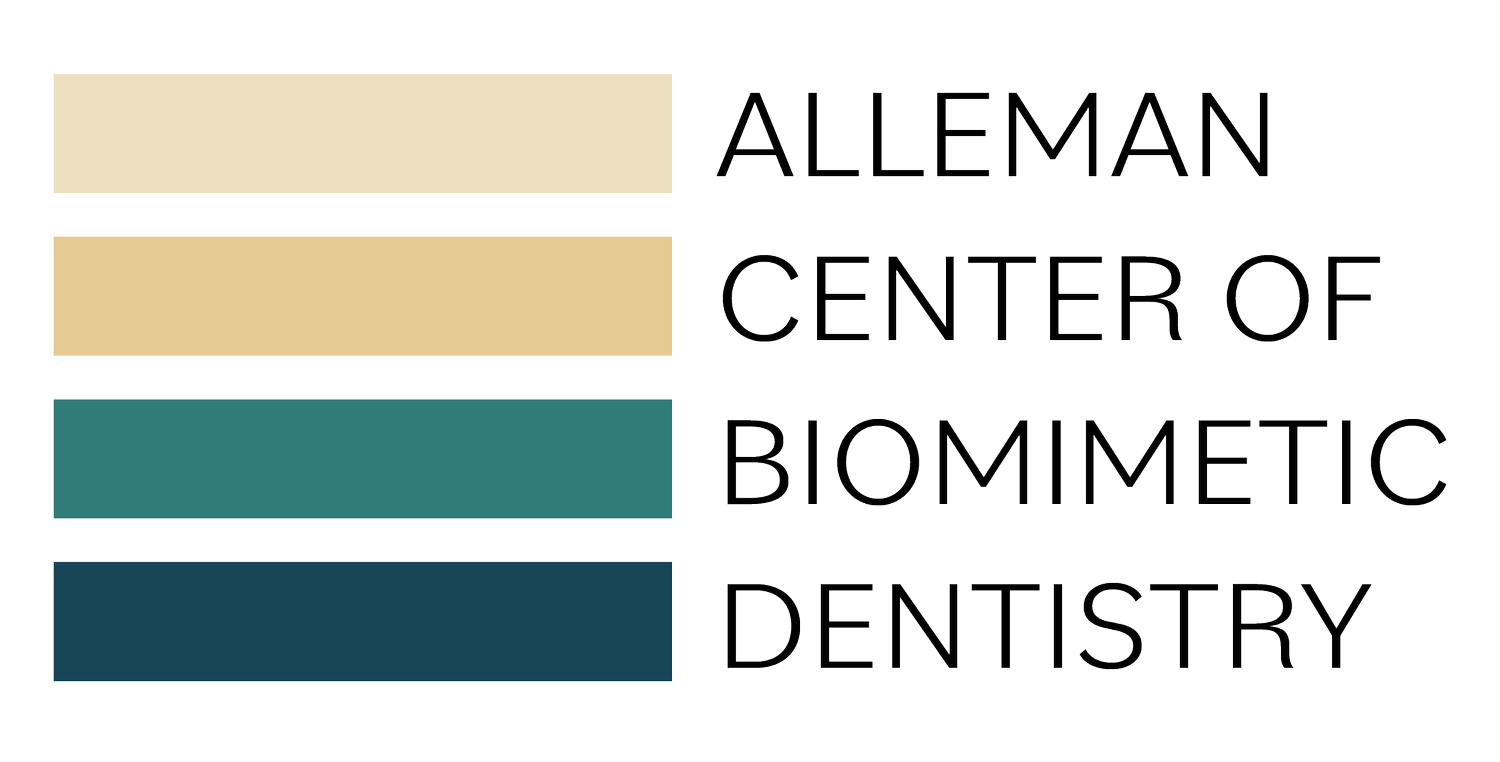Central Stop Zone (CSZ) in Dentistry: Protecting Pulp Vitality
The term central stop zone (CSZ) was coined in 2020 by Drs. David Alleman, Davey Alleman, Patrick Calalang, Ashley Chung, Jihyon Kim and Brandon Walker. Emphasizing the need to stop before entering, they decided on the term central stop zone.
The concept of the central stop zone was originally outlined in the peripheral seal zone (PSZ) concept by Dr. David Alleman and Dr. Pascal Magne in their 2012 article, A systematic approach to deep caries removal end points: the peripheral seal concept in adhesive dentistry, Quintessence Int. Described at that time as the area inside the peripheral seal zone, it was identified as an area where the pulp lived, so pathology treatment should stop before entering this area.
This image by Dr. David Alleman, DDS is from his early research while formulating the peripheral seal zone concept.
The peripheral seal zone concept
Dr. David Alleman began researching techniques to increase predictability in adhesive dental outcomes in 1998. With the use of caries detector dye, only recently available in the United States, doctors could now see exactly where caries had denatured the tooth’s collagen, but where should removal stop? By analyzing hundreds of extracted teeth, Dr. Alleman identified the precise measurements doctors could use to avoid exposing the pulp while removing as much caries as possible within the bonding field. From this he created the peripheral seal zone concept, which was published in the 2012 article with Dr. Pascal Magne.
This case by Dr. Davey Alleman, DMD shows how caries and cracks are removed in the peripheral seal zone, but removal stops before entering the central stop zone.
How practitioners can use the central stop zone
The central stop zone identifies the limit of caries removal or crack removal when treating pathologies in the tooth. By using peripheral seal zone measurements, practitioners can stop removal before entering the central stop zone, effectively eliminating pulp exposures. While some incipient pathologies will not approach the central stop zone, this gives clear guidelines for deeper defects for caries removal endpoints (CRE) and crack removal endpoints (CrRE).
Increasing adhesive predictability with the central stop zone: Understanding central stop zone protocols increases predictability in adhesive dentistry by promoting long-term bonds and protecting pulp vitality.
Protecting pulp vitality with the central stop zone: Exposing the pulp can expose the nerve to bacteria and inflammation as the pulp begins its immune response. Indirect pulp caps increase pulp vitality 300% compared to direct pulp caps (Thompson V, Craig R, Curro F, Green W, Ship J. Treatment of deep carious lesions by complete excavation or partial removal: A critical review. JADA 2008; 139(6) 705-712). Prevention is the best medicine, so using a systematic approach like the peripheral seal zone concept increases predictability to prevent pulp exposures and promote long-term pulp health.
This case by Dr. Davey Alleman, DMD shows how teeth testing vital can be given a chance to heal, preventing the need for endodontic treatment in almost all cases. Caries is left in the central stop zone and sealed with biomimetic techniques like immediate dentin sealing. Bacteria near the pulp goes dormant and the pulp can heal.
How the central stop zone increases bond strengths to dentin
Bonding to carious dentin decreases bond strengths by 30-75%, depending on the type of decay. Long-term bonds require high bond strengths to dentin, so when Dr. David Alleman created his Six Lessons Approach to Biomimetic Restorative Dentistry, he identified ways to increase bond strength. One of these techniques is creating a peripheral seal zone free from caries. Using caries detector dye and the peripheral seal zone concept, practitioners can identify exactly where caries needs to be removed (caries removal endpoints) to achieve the highest possible bond, while feeling confident in avoiding pulp exposures thanks to the central stop zone.
Here the hierarchy of bondability is clearly visible, outlining the various dentinal substrates in the bonding field. Photo by Dr. Davey Alleman, DMD.
Reduce adhesive stress with the central stop zone concept
Cracks into dentin can increase stress to the restoration because the tooth is not connected in the areas under the hybrid layer and will bend and flex more than a tooth is naturally designed to do during the forces of occlusion. The central stop zone outlines exactly where cracks can be safely removed and when practitioners have reached their crack removal endpoints (CrRE). Treating cracks into dentin in this way reduces stress to the restoration to promote long-term bonds.
Dr. David Alleman’s goal with his Six Lessons Approach was predictability. He sought to create a system that doctors anywhere could use to achieve the same results: conservation of tooth structure, elimination of post-operative sensitivity and long-term bonds to stop by cycle to retreatment. Over the last 22 years, hundreds of doctors around the world have used the Six Lessons Approach in their own offices and demonstrated how effective this system is. Learn more about Six Lessons Approach training in Alleman Center biomimetic dentistry continuing education training programs.
Learn more about increasing predicability in restorative dentistry in this Six Lessons Approach Podcast episode with Dr. David Alleman, DDS.











